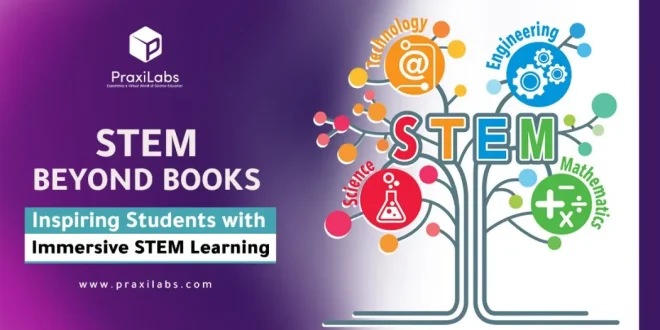Last Updated on October 26, 2025 by Muhamed Elmesery
By engaging students in dynamic, real-world applications of STEM, we not only spark their curiosity but also empower them to become innovative problem solvers. In this blog post, we will explore the exciting ways in which immersive learning can inspire the next generation of thinkers and creators ( inspire students with immersive STEM learning ), igniting a lifelong love for science and technology.

Table of Contents
Discover The Importance of STEM Education
STEM education aims to combine four educational disciplines (science, technology, engineering, and mathematics) into a cohesive learning paradigm based on real-world applications. Through STEM education, students gain and develop critical skills such as ,critical analysis, creativity, teamwork, communication, initiative, problem-solving, digital literacy, and more.
The importance of STEM can be summarized as follows:
- Transformative Skill Set Development.
- Meeting Global Workplace Demands.
- Best Practices in all the Disciplines of STEM.
- Edge Over Traditional Students
- Instills leadership quality
- Inventions In STEM Areas
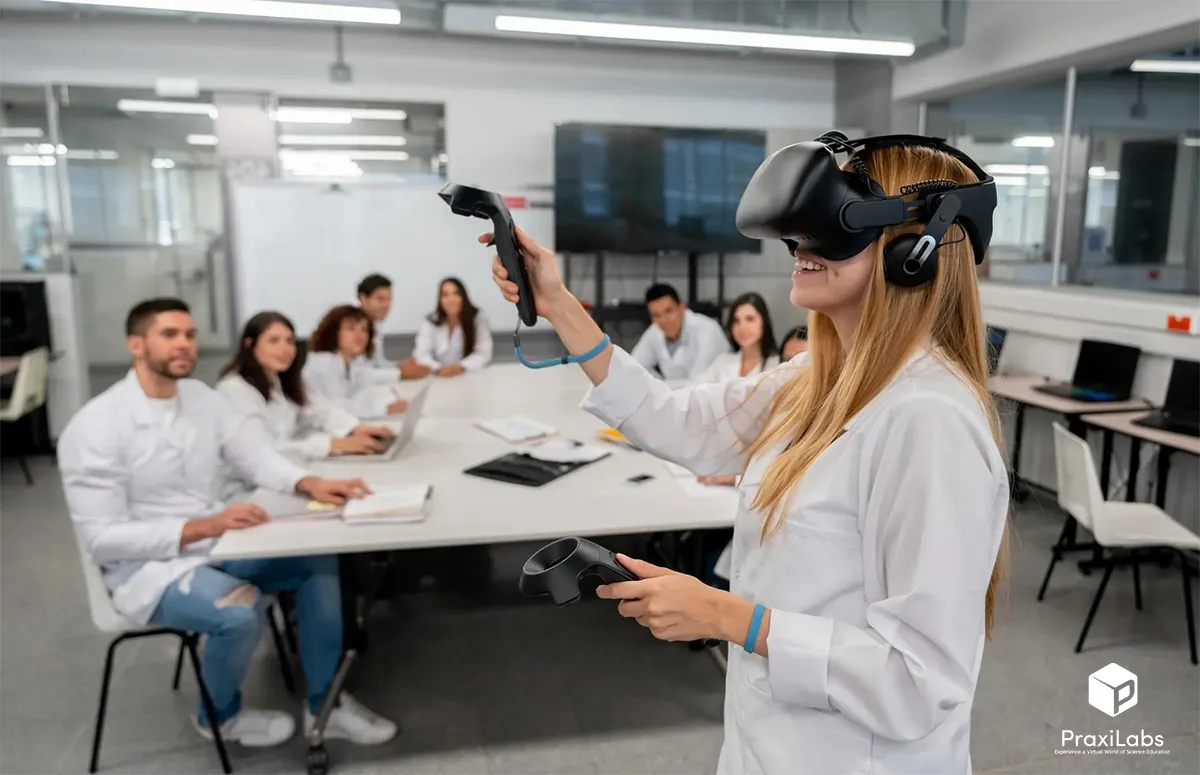
How to Integrate Augmented Reality in a STEM Lab
Augmented reality (AR) is an interactive technology that integrates the real-world objects and computer-generated 3D content (graphics, images, audio, and text). The content can span multiple sensory modalities, including visual, haptic, auditory, olfactory, and somatosensory.
Augmented reality improves physical learning in a STEM lab. Looking at pictures of molecules such as benzene isn’t the same as holding the molecules in your hands and manipulating them. AR can increase engagement, understanding, recall, and more.
Even better, students can create virtual models that can explore with AR, which can become reality via 3D printing. It’s a great way to help students apply theoretical principles and protocols and turn them into practical results.
To integrate augmented reality in a STEM lab, you need to follow the basic steps below:
Setting goals
It’s important to start by identifying the learning goals that connect with the curriculum. While it’s amazing for an individual lesson to be exciting and intellectually stimulating, ideally it should fit within a larger context of the applicable curricular aims and other lessons that are planned. That way, students can make connections between their learning in this activity and other activities before and after. Goal setting can be a little more complex in STEM labs because sometimes students may set some of their own targets. However, the ultimate learning objectives should still tie back to the curriculum. Students might set smaller goals that are milestones towards the larger, fixed goal.
Training and expectations
Students need to know how to use a tool – they need to be trained. And they need to know how they ought to behave when using the tool – they need to understand expectations.
It’s important to note that when students don’t fully understand how to use a tool, they’re more likely to be disengaged from the task or come to dislike it. Students love being effective and competent, so good training in using AR and related tools is a great first step to success.
Behavioral expectations can also help to create the climate of scientific collaboration and discovery that’s ideal in STEM labs.
Responsibility and autonomy
Group work and project-based work are skills like any other. Students who aren’t used to working in groups, or who aren’t used to working in a more autonomous manner, may need help and preparation to succeed. That’s true for all STEM lab work, but even more so for work with AR, which may be confusing because it’s new to students.
While social-emotional skills like metacognition, autonomy, and teamwork aren’t typically a part of STEM, they are vital for success in future life – which is just another reason why STEM labs can be so valuable.
Assessments
Creating good assessments is an art. In some cases, AR makes this task easier – although not always.
Firstly, it goes without saying that STEM labs with AR are not the ideal venues to use formative or summative assessments in the form of paper quizzes and tests. Formative assessments may be easiest to conduct through observation, as a teacher walks through the STEM lab and checks on students’ understanding and progress. Before the project begins, teachers should also think about what they’ll do if the formative assessment suggests that the plan needs adjustments as it goes along – such as if students are stuck on a certain aspect of the task and need more help.
On the other hand, project-based learning is likely to create products that can be used for summative assessment, which can make assessment easier and more natural than a paper test. The key here is to ensure that the activities and the assessment address the same skills and match up appropriately.
Source: How to Integrate Augmented Reality in a STEM Lab | Classvr
Discover Why Integrated STEM Education is the Key to Building Bridges
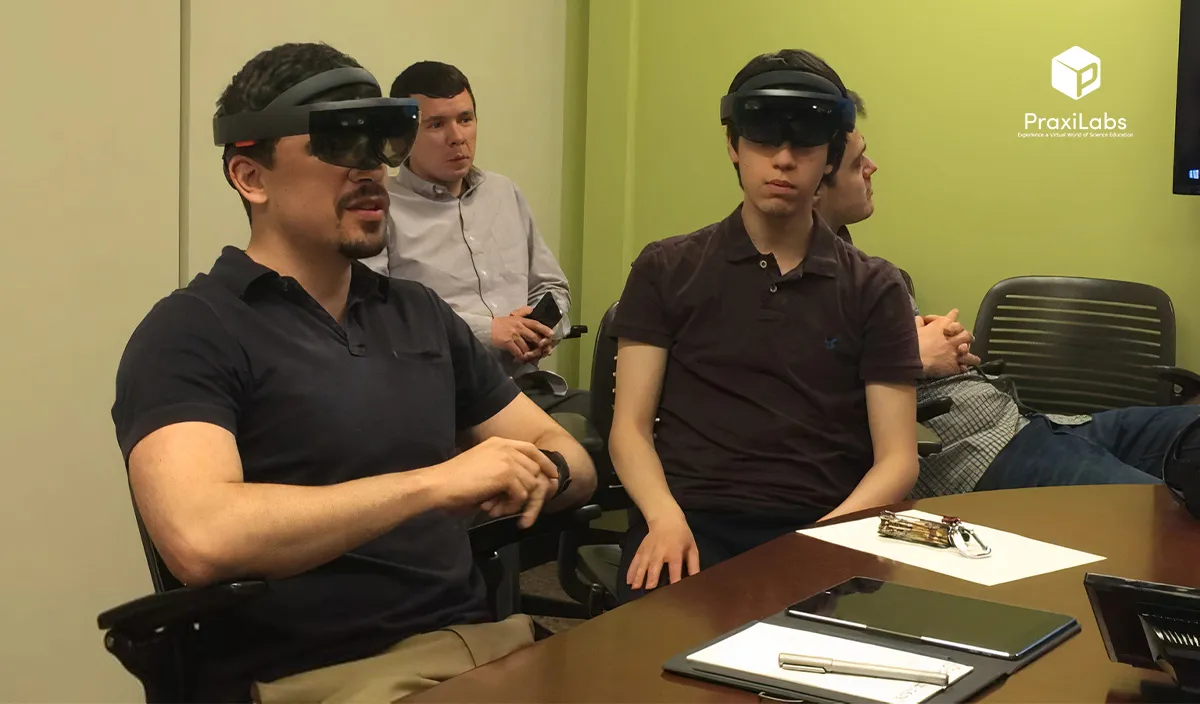
Active Learning Tools for the STEM lectures
Active learning is a way of learning in which students are actively involved in the learning process.
Active learning tools can help decision-makers in higher education on how to prepare students to complete their studies and enter STEM careers. Active learning tools help students develop the skills they need to meet the demands of the modern workforce.
There are several ways and tools that are used to apply active learning in STEM lectures. Let’s take some examples:
- Clarification Pauses.
- Writing Activities such as the “Minute Paper”.
- Self-Assessment.
- Large Group Discussion.
- Peer Review.
- Group Evaluations.
- Think-Pair-Share.
- Brainstorming.
- Inquiry Learning.
- Case Studies.
- Hands-on Technology.
- Interactive Lecture.
- Active Review Sessions (Games or Simulations).
- Role Playing.
- Cooperative Groups in Class (Informal Groups, Triad Groups, etc).
- Jigsaw Discussion.
- Forum Theater.
- Experiential Learning.
- Virtual lab simulation.
The following figure describes and compares between active learning and passive learning:
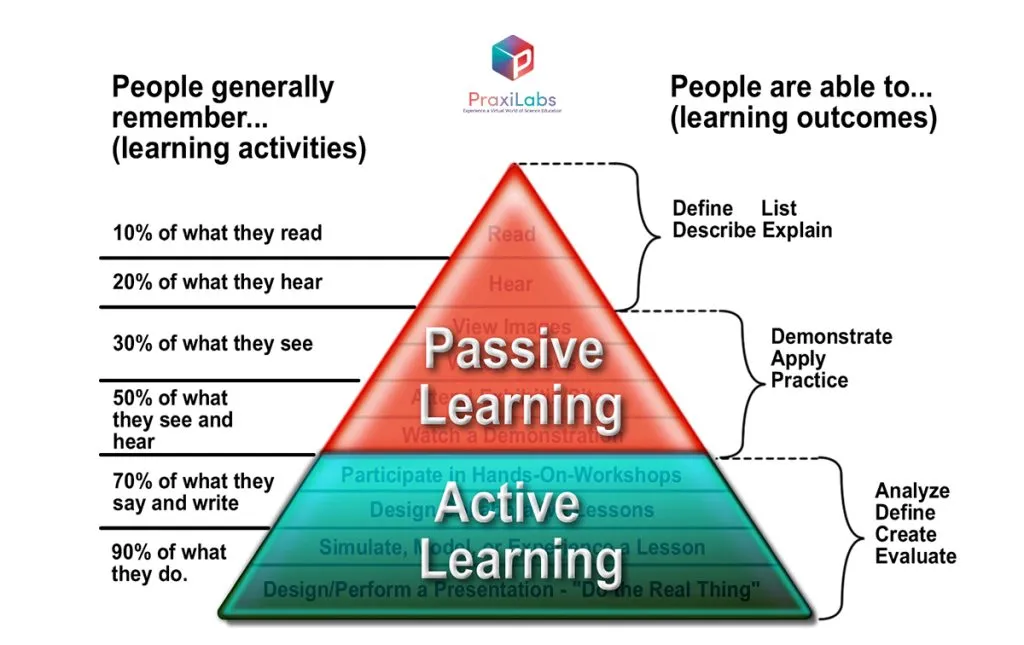
How Virtual Labs Ignite Active Learning
Virtual labs are now one of the most effective educational solutions used in higher education and schools to enhance active learning outcomes and student engagement.
The interactive 3D virtual lab solutions provide students with access to realistic labs and enrich their understanding with a variety of informational and educational content to enhance their understanding and learning, with the aim of providing equal opportunity for an enhanced STEM education for students everywhere.
A lot of universities, colleges, and educational institutions have already adopted virtual labs as they recognize the vital role of virtual environments in increasing active learning and student engagement.
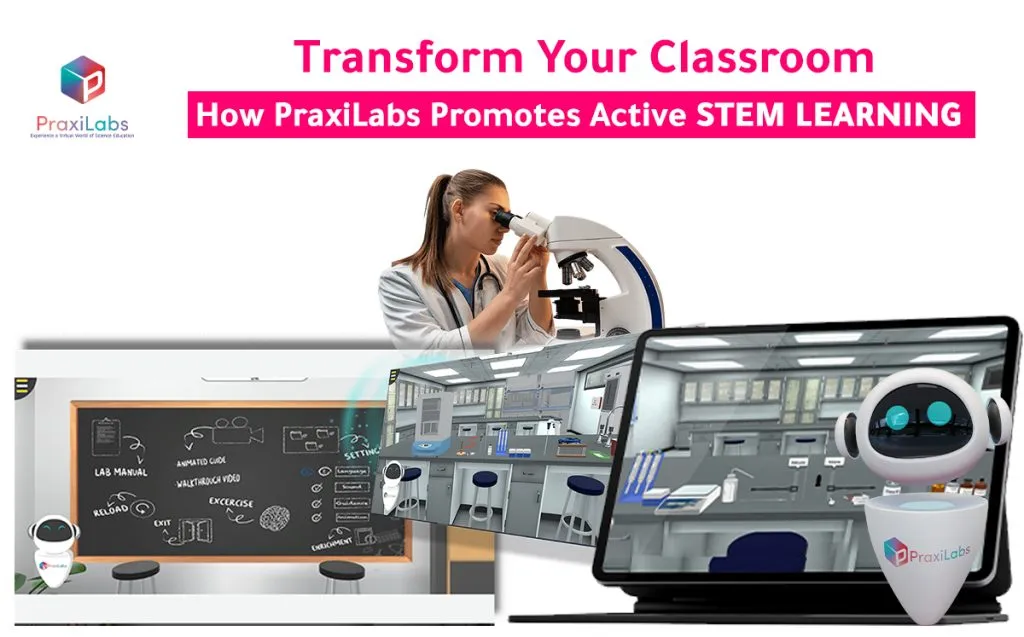
Transform Your Classroom: How PraxiLabs Promotes Active STEM Learning
In PraxiLabs, we provide highly interactive and immersive 3D science experiments simulations that mimic real-life labs. And while our focus is on scientific correctness and proper representation of labs, we also provide further support and guidance through our supplementary material and immediate feedback to not only exercise specific steps of an experiment but to also experience and learn about the experiment for a better understanding.
PraxiLabs also provides instant and unlimited access to any STEM lab simulations you want from anywhere, without the hassle of going to the laboratory. Let your young scientists enjoy their journey, at any time!
With PraxiLabs students get a full experience, with guidance and learning materials to further aid the learning process rather than simply following instructions .
With PraxiLabs students can actively learn besides performing their experiments.
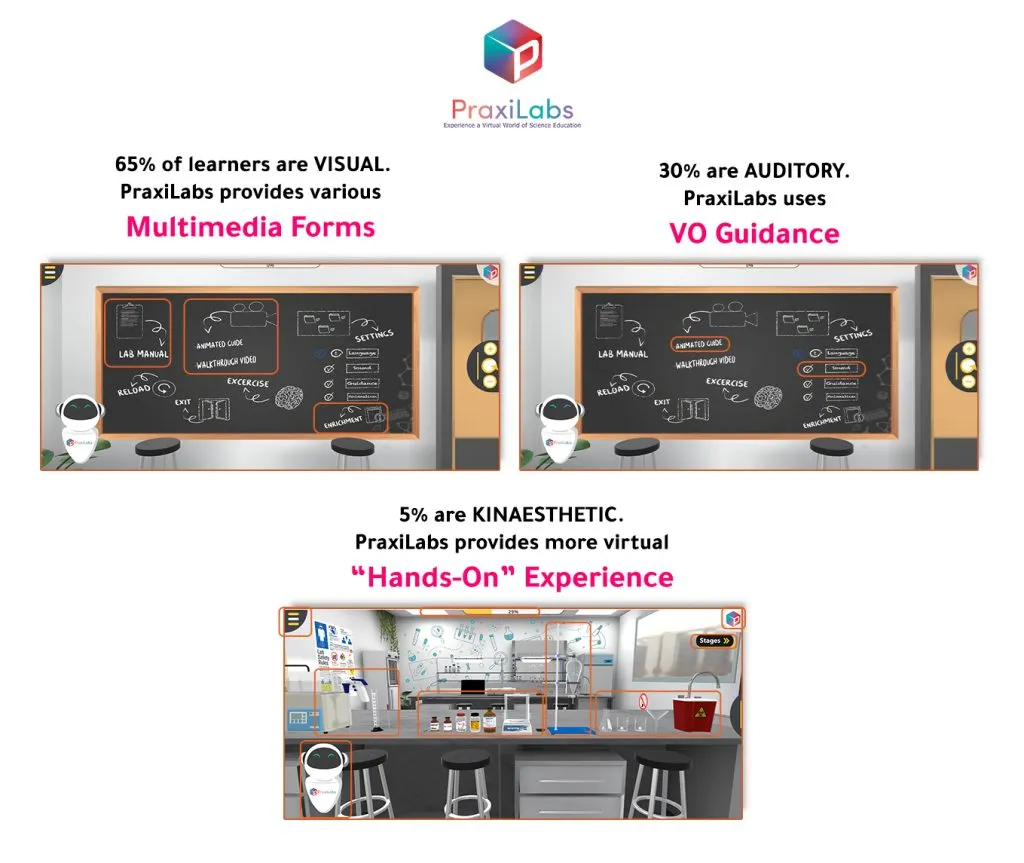
65% of learners are VISUAL. PraxiLabs provides various multimedia forms
30% are AUDITORY. PraxiLabs uses VO guidance.
5% are KINAESTHETIC. PraxiLabs provides more virtual “hands-on” experience
Each student absorbs knowledge and information differently. While class lectures, textbooks, and lab experiments are each separately effective for each learning style, PraxiLabs combines its virtual lab with additional multimedia and text to provide each learner with material that fits his/her learning style.
Increase your Students’ Learning Retention and Engagement With PraxiLabs’ virtual labs!
How immersive learning enhance the student learning?
Immersive learning is a learning method in which students are immersed into a virtual environment by using virtual reality technology to simulate the real world. You can inspire students with immersive STEM learning and motivate them to act with intention and to become active participants in learning, rather than being passive recipients. Immersive learning also decreases the cognitive load for the students and increases their engagement.
How might you engage your students with STEM activities?
You can engage your students with STEM activities by following effective and engaging strategies such as:
- Blending virtual reality technology into the STEM classrooms.
- Diversify learning content for optimized engagement.
- Encourage student voice and choice.
- Incorporate hands-on activities.
- Incorporate student decision-making into classroom lessons.
- Focus on STEM-related skills.
What are the motivational factors of students in choosing STEM strand?
According to a study, the factors of students in choosing STEM strand that have the potential to engage students in shaping their skills in line with their chosen course are:
- Career, wherein the student says that it is related to the course they will take in college and to the job they want to have in the future.
- Interest, where some students say that they want to challenge themselves in Mathematics and Science to improve their understanding and skills.
- Uncontrolled Circumstances, wherein they have no other choice because of their parent’s decision to take this strand.
Students believe that the STEM strand is the right choice for them. The specialized subject such as Mathematics and Science in this strand is very significant to those students who need mastery in their tertiary degree.
On PraxiLabs, you can find different virtual lab simulations accessible anytime and anywhere.
 PraxiLabs A virtual world of science
PraxiLabs A virtual world of science

